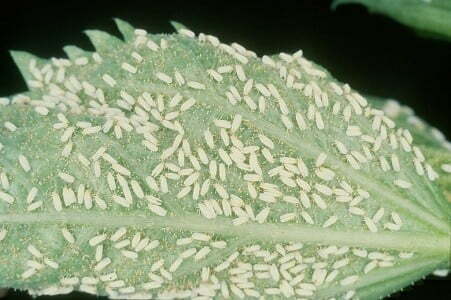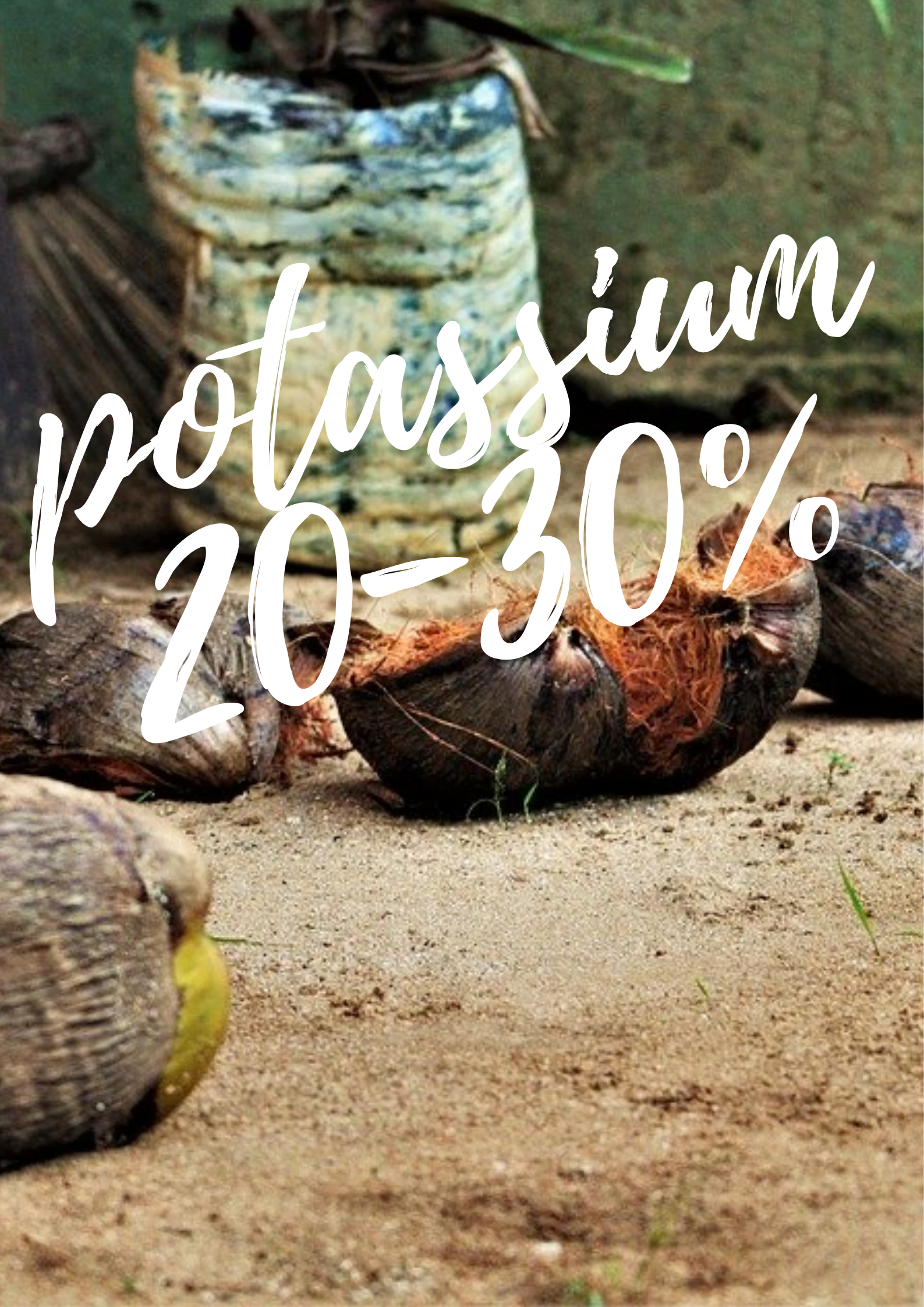How to Treat Whitefly infestation on plants
How to treat whitefly on plants systemically can we divide into 4. Namely:
- Natural control.
- Orderly planting simultaneously in large areas.
- Plant barrier plants.
- Avoid when generative growth from hot weather.
- Effective insecticide control. [1]
The five ways above are a united (systemic) step in overcoming the whitefly infestation on a garden.
If only for plants in the garden, we can overcome whitefly with simple ingredients. Namely using Epsom salt and liquid soap.
Why does it have to be systemic?
Because it prevents whitefly infestation from being able to control population and severe attacks.
Steps 1-4 are like a fortress. While the fifth step is only the execution step if it turns out, there is still a whitefly that escapes.
Execution by insecticide alone will not be able to stop future attacks. It could be that in our land the whitefly is dead, but there will be an attack from another garden.
This is because whitefly has a large number of host plants. There are more than 300 types of plants that can be attacked by whitefly.
This is important because whitefly infestation is very massive and can damage plants.
There are three potential damage that can be caused by whitefly infestation.
- Whitefly when attacking plants will eat and damage plants directly. Because they eat and suck plant fluids.
- This insect will emit or produce honeydew. This honeydew will trigger the growth of sooty fungus. It’s like something covering the leaves, but the color is black.
- Whitefly can spread the transmission of plant diseases due to viruses. One of them is the Cowpea Mild Mottle Virus (CMMV) in soybeans and beans. And, whitefly is the only insect that can spread (vector) a yellow virus attack on chili plants.
I will try to be able to provide more details about it all. I try as much as I can.
Ok, let’s go back to the five steps to treat whitefly above. Maybe, there are 2 or 3 points that are still doubtful. How can these steps overcome whitefly?
Apparently, after I read some literature, it made sense.
Planting simultaneously will harvest simultaneously as well. After that, ideally, agriculture will be replaced by non-host plants from the whitefly. Example: corn and rice.
Tomatoes, chilies, eggplants, melons, and peanuts are the host plants of whitefly.
But, many do not do that. Because non-host plants usually produce less money. Or the condition of the land is not suitable.
But if this is done, it could temporarily cut off the whitefly food supply. If no food is available, no ticks will come.
Again, this step must be carried out in groups and is not effective if only one or two people. Moreover, with fairly narrow land ownership.
If one garden changes plants but the next garden does not, then it’s useless.
Avoiding generative growth from hot weather is for whitefly generative growth. Not for the plant.
When the weather or the temperature of the environment is hotter, this will make whitefly experience adult sex more quickly.
That is, the reproductive cycle will be shorter and whitefly can produce more progeny.
That is the simple logic of why planting simultaneously and avoiding hot weather can treat whitefly.
However, because this step is only suitable for large plantations (privately owned or company), we go straight to the next steps.
Whitefly treatment with barrier plants
Barrier plants will be useful to limit movement, transmigration, and spread of whitefly infestation so as not to spread.
This barrier plant is usually taller than the main plant. But the important thing is that it is not one family with the main plant.
For example, if you plant tomatoes, chilies, soybeans, eggplants, the barrier plants are corn or scrubs.
Therefore, barrier plants that will be used must be planted first. At least, it has been planted 3-4 weeks before planting the main crop.
Besides using plants, barriers can also use gauze. But, the gauze is only a physical barrier. If you are using a greenhouse, it’s even better.
But, can’t whitefly fly? Yes, it is.
But, in addition to being a barrier, barrier plants are also a place to live for natural predators of whitefly. Namely the beetle Coccinellidae (Menochilus sexmaculatus Fab).
This step will not work 100%. However, this step has been done a lot and was quite successful in reducing the population of whitefly.
For example, soybeans with corn planted tightly around soybeans can be a barrier to the migration of whitefly infestation.
The population of whitefly in soybean without barrier plants is on average 50% higher than soybean plants with barriers since 35 days after planting.
At 63 DAP, the population of whitefly in the plot with barrier plants is only one-third of the population of whitefly in the plot without barrier. [2]
More recent research also shows similar results to the above.
For red chili plants which are planted with corn and snail barriers, the population of whitefly is found to be lower than without using barrier plants.
In fact, corn and snail barriers are more effective than using gauze. Although the height of the gauze is as high as 2 meters. [3]
Regarding gauze, this is relative to the funds owed. With a high density and a higher barrier height, it can also be more effective than a biological barrier. That is a barrier from plants.
Even better if you use a high gauze barrier and inside there is a barrier plant too.
A good watering to prevent whitefly
Good irrigation is watering consistently with short irrigation intervals according to plant needs. Doing this can limit the development of whitefly.
That is, when it rains, the rainwater must immediately come out of the land and there should be no standing water.
A good watering method is to use a sprinkler. Even more effective, if the watering is accompanied by insecticides.
We can use organic insecticides, as we will discuss later.
Overcome whitefly with natural predators
Whitefly natural predators will usually come on their own when the host plant is planted.
The barrier plants that bring the most natural enemies of whitefly are corn.
From one study, at least 9 species of animals were found in corn barrier plants which could be predators of whitefly. [3]
The nine whitefly predators include:
1. Menochilus sexmaculatus
2. C. transversalis
3. V. lineate
4. V. discolor
5. Harmonia sp.
6. Coelophora sp
7. C. coeruleus
8. P. fuscipes
9. Condylostylus sp
Insecticide for whitefly
Insecticides will still be needed to deal with whitefly infestation. Because the steps above will not be 100% able to deter attacks.
Therefore, there will definitely be a number of whitefly ticks that will escape. Although the population and attack rates are not severe.
However, even though a little, if left unchecked and not handled, the amount will be a lot.
So, we need insecticides to execute whitefly infestations that successfully attack plants.
Insecticides for whitefly can use synthetic or organic insecticides.
But, this time I will not mention the synthetic insecticide. I will focus on vegetable or organic.
Many herbal plants can be made as an insecticide to treat whitefly. Among others are:
Jicama. [4]
Pods Neem tree. [4]
Tobacco leaf. [4]
Soursop seeds. [5]
Velvet bean. [5]
Garlic. [6]
Let’s go directly to the making steps for each of the ingredients above.
How to make Jicama insecticide for whitefly treatment
Jicama seeds differ from their tubers. This is a picture of Jicama pods and tubers.
Seeds will be produced by Jicama which is already in the generative phase. Jicama will flower and this flower will produce pods (like beans).
The contents of this Jicama pod are used and this is the steps for make it as insecticide.
1. Jicama seeds are ground until smooth, then soaked using water, stored for 24 hours.
2. The comparison of Jicama seeds with water is 125gr: 1L.
3. Then filter with a 1mm diameter filter.
4. Usage dose, every 50 mL plus 1 liter of water.
5. Ready to use.
Making Organic insecticide from Pods Neem tree for whitefly
1. Pod Neem tree pounded until smooth, then soaked with water and stored for 24 hours.
2. Comparison of Pod Neem tree with water of 100 gr: 1 Liter.
3. Then filter with a 1mm diameter filter.
4. Usage dose, every 50 mL plus 1 liter of water.
5. Ready to use.
Making Organic insecticide from tobacco leaves for whitefly
1. Sliced tobacco leaves into small pieces then dried in the sun directly to dry. Or buy tobacco that has been chopped.
2. Then, soak the tobacco leaves using water for 24 hours. The comparison is 125 grams of tobacco: 1 Liter of water.
3. Then, strain it with a 1mm diameter filter.
4. Usage dose, every 50 mL plus 1 liter of water.
5. Ready to use.
Making Organic insecticide from Garlic for whitefly
1. Garlic is peeled and then blended.
2. Then mixed with kerosene in a ratio of 1: 2. If 250 grams of garlic, 500 ml of kerosene.
3. Keep it for at least 24 hours.
4. The most effective dose is 60 ml/liter. If we use 60 ml of the above insecticide, use it plus 940 ml of water.
5. According to research, this can kill insects 3 days after using almost 100%. [6]
How to treat whitefly on plants with Epsom salt?
One teaspoon of Epsom salt, dissolved in 1 liter of clean water.
then, stir until it dissolves.
After that, add liquid soap. The amount is not much, only 2 drops.
Stir again until evenly distributed and spray on the whitefly.
After sprayed with epsom salt solution, these whitefly died and dried.
Yellow trap installation
The yellow trap should still be installed. Because this is very practical, inexpensive and quite effective in trapping whitefly.
Yello traps can be made from wooden boards, bottles or paper that are painted yellow then smeared with used engine oil.
The ideal number of yellow traps is 40 pieces per hectare. With installed evenly distributed.
Reference
[1] Marwoto, Febria Cahya Indriani, Apri sulistyo, and Ratri Tri Hapsari. Diagnosis of Population Explosion of whitfly Bemissia Tabaci in Soybean Planting (Case Study of Factors Causing the Explosion of Whitefly Population in Muneng District Mk 2009). Indonesian Beans and Tuber Crops Research Institute.
[2] Alfi Inayati and Marwoto. Technical Culture as a Basis for Pest Control of Whitefly Bemisia Tabaci Genn. In Soybean Plants.
[3] Kukuh Udiarto, Bagus. 2012. Utilization of Peripheral Limiting Plants and Coccinellidae Predators for the Control of Whitefly Bemisia Tabaci (GENNADIUS) (HEMIPTERA: Aleyrodidae), Begomovirus Vector in Red Chili Plant (Capsicum annuum L.). Thesis. Bogor Agricultural University Postgraduate School Bogor.
[4] Kurnia Paramita Sari and Suharsono. The Efficacy of Vegetable Insecticide in Controlling Whitefly, Bemisia Tabaci Genn. (HOMOPTERA: Aleyrodidae). Malang Bean and Bulbs Variety Crop Research Institute.
[5] Juliana, Elsa Dwi. 2012. The Effectiveness of Annona Muricata Linn Extract. And Tephrosia Vogelii Hook. Against Mortality Bemisia Tabaci Genn. In Chili Plants. Department of Plant Protection Faculty of Agriculture Bogor Bogor Agricultural University.
[6] Hasnah and Ilyas Abu Bakar. Effectiveness of Garlic Bulbs (Allium sativum. L.) Extracts for Controlling Crocidolomia papovana F. on Cassava Plants. Department of Pests and Plant Diseases Faculty of Agriculture, Syiah Kuala University, Banda Aceh. Agrista Vol. 11 No. 2, 2007.
 JOYNIM FARM Goat Farming, Cattle Farm, Laying Hens, Quail Farm, Gardening
JOYNIM FARM Goat Farming, Cattle Farm, Laying Hens, Quail Farm, Gardening










